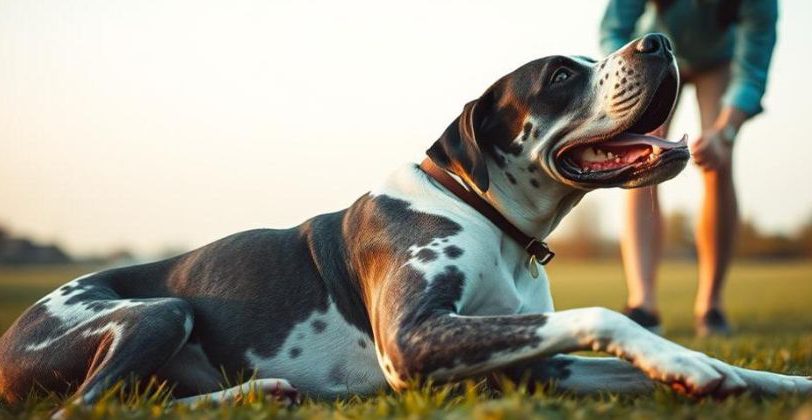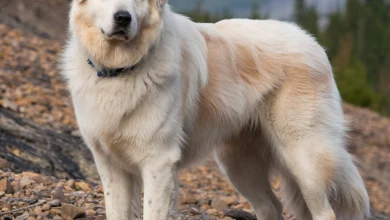The Great Dane: A Gentle Giant with a Big Heart

The Great Dane, often referred to as the “Apollo of dogs,” is one of the tallest and most majestic dog breeds. Despite their imposing size, Great Danes are known for their gentle and affectionate nature, earning them the nickname “gentle giants.” If you’re considering bringing a Great Dane into your home, this guide will provide you with all the information you need about their temperament, care, and what it’s like to live with this giant breed.
1. Why Choose a Great Dane?
Great Danes are beloved for their incredible combination of size and sweetness:
- Gentle Giants: Despite their enormous size, Great Danes are known for their gentle, loving nature. They tend to be calm, patient, and good with children, making them excellent family dogs.
- Loyal Companions: Great Danes are loyal and protective of their families. They enjoy being around their humans and can be quite affectionate, often thinking of themselves as lap dogs!
- Low Energy Indoors: While they are large, Great Danes are relatively low-energy dogs indoors. They are content to lounge around the house and enjoy relaxing with their families.
2. Characteristics of the Great Dane
Understanding the traits of Great Danes is important before adopting one:
- Size and Build: Great Danes are one of the largest dog breeds, with males standing between 30 to 34 inches tall at the shoulder and weighing around 140 to 175 pounds. Females are slightly smaller but still very large, weighing between 110 to 140 pounds.
- Coat and Colors: Great Danes have short, smooth coats that come in a variety of colors, including fawn, brindle, black, blue, harlequin (white with black patches), and mantle (black and white). Their coat is easy to maintain with regular brushing.
- Temperament: Great Danes are known for their calm and friendly disposition. They are gentle with children, social with other pets, and are generally well-mannered. However, they can be protective and make excellent watchdogs due to their size and deep bark.
3. Caring for a Great Dane
Owning a Great Dane comes with specific care needs due to their size and health considerations:
- Exercise Requirements: Despite their size, Great Danes do not require excessive exercise. A daily walk or moderate playtime in a yard is usually enough to keep them healthy and happy. However, it’s important to avoid overly strenuous exercise, especially in puppies, as their growing joints can be sensitive.
- Grooming: Great Danes have short coats that are easy to maintain. Brushing them once a week helps reduce shedding and keeps their coat looking smooth and healthy. They only need occasional baths unless they get particularly dirty.
- Diet: Given their size, Great Danes require a large amount of food, but it’s important to feed them a diet that supports their slow and steady growth, especially during puppyhood. Consult with your veterinarian to choose a diet that’s appropriate for a giant breed, as improper nutrition can lead to joint and bone issues.
4. Training Your Great Dane
Training is essential for Great Danes to manage their size and behavior:
- Start Early: Begin training your Great Dane as early as possible. While they are gentle by nature, their size can make them difficult to manage if they aren’t well-trained. Teaching basic commands like “sit,” “stay,” and “heel” early on will help ensure good behavior.
- Positive Reinforcement: Use positive reinforcement techniques, such as treats and praise, when training your Great Dane. They are intelligent and respond well to gentle encouragement.
- Socialization: It’s crucial to socialize Great Danes from a young age. Introduce them to different environments, people, and other animals to prevent any fearfulness or anxiety as they grow older.
5. Living with a Great Dane
Before bringing a Great Dane into your home, consider these factors:
- Space Needs: Great Danes are large dogs that need space to move around comfortably. While they can adapt to apartment living if given enough exercise, they are best suited to homes with plenty of space, including a yard where they can stretch their legs.
- Furniture Considerations: With their size, Great Danes often think they are lap dogs, so expect them to want to sit on the couch with you! You’ll need to ensure that your home’s furniture is sturdy enough to handle their size.
- Health and Lifespan: Great Danes are unfortunately prone to certain health issues, such as hip dysplasia, heart problems, and bloat (gastric torsion), which can be life-threatening. Regular veterinary checkups are essential to monitor their health. Sadly, Great Danes have a shorter lifespan than many other breeds, usually living around 7 to 10 years.
6. Fun Facts About Great Danes
- Tallest Dog Record: The record for the world’s tallest dog is often held by a Great Dane. One famous Great Dane, Zeus, stood a staggering 44 inches tall at the shoulder!
- Ancient Roots: Despite their name, Great Danes originated in Germany, not Denmark. They were originally bred to hunt boars and protect estates.
- Gentle Nature: Great Danes are known for their calm and gentle temperament, often being described as “gentle giants” due to their affectionate and patient behavior.
Conclusion
Great Danes are a unique blend of size, elegance, and gentleness. While their size can be intimidating, their loving nature makes them ideal family dogs for those who have the space and time to care for them properly. By providing them with proper exercise, a balanced diet, and regular health checkups, you can ensure that your Great Dane leads a happy, healthy life. If you’re ready for a big, affectionate companion who will be a loyal friend, the Great Dane might just be the perfect pet for you!



